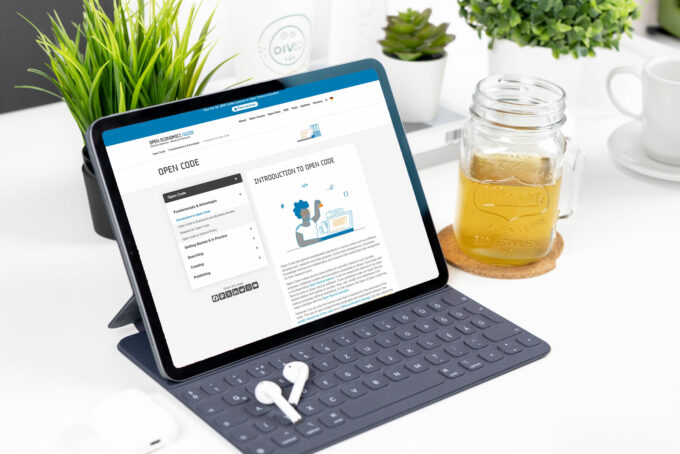
Open Science Maturity: Universities in Finland in the Leading Position
Finland has already achieved considerable milestones in fostering an open science culture on a national level. A recently published evaluation highlights best practices in Finland, barriers and ideas to remove them.
by Birgit Fingerle
Finland was one of the first countries which started to promote the open science approach. An openness evaluation published by the Finnish Ministry of Education and Culture in January 2020 demonstrates that Finnish research organisations achieve impressive results for their open science implementation. The “Atlas of Open Science and Research in Finland 2019 – Evaluation of openness in the activities of higher education institutions, research institutes, research-funding organisations, Finnish academic and cultural institutes abroad and learned societies and academies.” serves to highlight best practices and areas of development. It shows that the 38 higher education institutions and 12 Finnish research institutes, three major Finnish research-funding organisations, four Finnish academic and cultural institutes abroad and seven organisations of learned societies and academies covered have taken a lot of practical steps since previous evaluations.
Skip to PDF contentIt shows that the 38 higher education institutions and 12 Finnish research institutes, three major Finnish research-funding organisations, four Finnish academic and cultural institutes abroad and seven organisations of learned societies and academies covered have taken a lot of practical steps since previous evaluations.
Universities reach the highest maturity levels
A five-level maturity model was employed to place the organisations within maturity levels based on the scores in the analysis. The results show: organisations with a resolute strategic steering and clear policy accomplish the change towards openness. The atlas also demonstrates that research organisations have been able to significantly improve their actions in fostering an open science culture. The development in openness in universities has been quite balanced and most organisations have been able to make relevant improvements in the openness of the operational culture and reach the highest maturity level. But strategic steering is a quite diverse area and the least mature area of openness that is to be found among the universities.
The results show that some research institutes have been able to make improvements in the openness of the operational culture, but most of them remain at the maturity level 4. Research institutes are very mature regarding the openness of collaboration. More of their areas of strength are principles of openness for research data, service principles supporting openness and the adoption of principles from the Open Science Framework. On the contrary, only four research institutes declare principles of openness to research methods in their policies. Furthermore, the principles of openness for scientific publications and self-archiving and to research methods remain underdeveloped at the research institutes. Thus, Finnish universities could serve as a role model for them.
Barriers and ideas for removing them
The data on maturity and barriers also highlight the strengths and weaknesses of the Finnish research organisations in creating an open science culture. The most significant barriers include juridical uncertainties, disproportionate standards for researchers to fulfil, conflicting incentives and insufficient funding and resources to promote openness. As the two barriers juridical uncertainties and issues on funding and resources also were among the most noteworthy ones in an earlier survey in 2016, this points at the urgency of taking actions to remove these barriers. Nevertheless, there are significant differences regarding the barriers by research organisation types. Thus, research institutes consider conflicting incentives and insufficient funding and resources as the biggest barriers and for universities uncertainties in fulfilling legal demands, conflicting incentives and disproportionate standards for researchers to fulfil are the biggest barriers.
The solutions for removing barriers mentioned in the atlas include: merit system and incentives, understanding individuality, cost provisioning of publications, re-use of research materials, deeper collaboration, developing skills, managing costs of openness and trust, confidence and resources.
Furthermore, specific actions for the different target groups were suggested.
The atlas shows that the most mature research organisations have determinedly invested in developing their capabilities to support openness and lists organisations that are worth a look as role models in creating an open science culture.
Further information:
- “Atlas of Open Science and Research in Finland 2019 – Evaluation of openness in the activities of higher education institutions, research institutes, research-funding organisations, Finnish academic and cultural institutes abroad and learned societies and academies”.
- Blog post MediaTalk: Moving to the next level: Interview on open science in Finland.
- Blog post MediaTalk: Open Access in Finland: How an Open Repository becomes a Full Service Open Publishing Platform.
Author: Birgit Fingerle
Birgit Fingerle holds a diploma in economics and business administration and works at ZBW, among others, in the fields innovation management, open innovation, open science and currently in particular with the “Open Economics Guide”. Birgit Fingerle can also be found on Twitter.
Portrait, photographer: Northerncards©
Foto by Tuomas Uusheimo
View Comments

Digital Trends 2020: From Citizen Scientists going on Expeditions to Peer-to-Peer Networks
Which trends will be important in the context of open science and in the context of...



